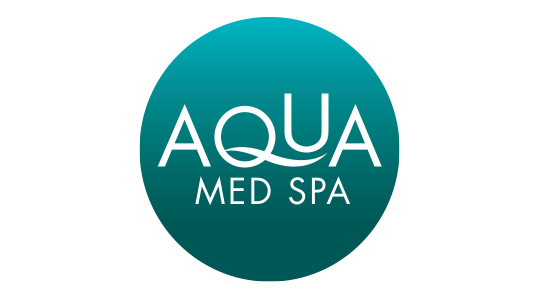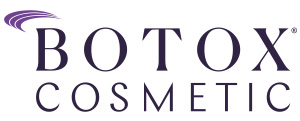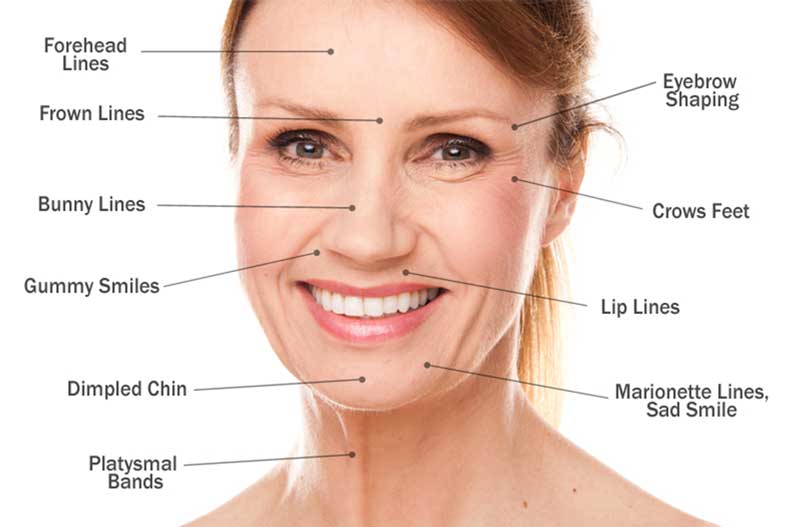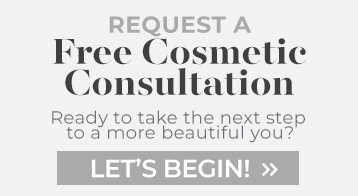 Real, noticeable results
Real, noticeable results
After years of repetitive expressions such as laughing, squinting and sun damage, the skin around the eyes and forehead often develops deep lines and wrinkles. These lines are known as expression lines. Now by utilizing BOTOX®, a muscle relaxing agent, expression lines can be reduced.
BOTOX® belongs to a class of drugs called botulinum toxins. BOTOX®, a focal agent intended to reduce muscle contraction, is the brand of botulinum toxin type A made by Allergan. BOTOX® is the most studied brand of botulinum toxins and has been helping patients worldwide for more than 15 years.
This section is designed to help you understand the way BOTOX® works, its effectiveness, and its side effects. BOTOX® works at nerves that are connected to muscle. It blocks the chemical communication between the nerves and the muscle.
BOTOX® is injected with a very fine needle in to the specific muscle. Immediately after treatment you may resume regular activities. Usually the effect is visible within a few days, but maximum results are reached between 10-14 days. The effects of BOTOX® usually last 3 to 4 months. The effects may last up to 6-8 months after several treatments.
Why Botox® Cosmetic is the one and only
BOTOX® Cosmetic is the first and only FDA-approved treatment that temporarily improves the look of moderate to severe frown lines, crow’s feet, and forehead lines in adults. It is a safe and effective treatment that can help you look like your best self, only with less noticeable facial lines.
Treatment is quick and easy. It takes just a few minutes to inject BOTOX® Cosmetic into the muscles in your face. You can return to your daily routine immediately after your treatment.
You may begin to notice results within 24 to 48 hours, with full results in 30 days. The results of BOTOX® Cosmetic treatment typically last up to 4 months.
Additional benefits of BOTOX® Cosmetic treatment:
- It is a non-surgical treatment, so there is no downtime.
- It is a safe and effective treatment that has been used by millions of people worldwide.
- It can help you look younger and more refreshed.
- It can help you feel more confident and self-assured.
Botox® Cosmetic cause expression lines to diminish including:
- Horizontal forehead lines
- Glabellar frown lines (vertical line between the eyebrows caused by squinting)
- Crows feet
Each treatment typically lasts up to 4 months and can be repeated as long as your condition responds to BOTOX® and you do not have any serious allergic reactions or other significant side effects. BOTOX® has been used for more than 15 years to help patients worldwide, and although formal, long-term clinical evaluations have not been conducted, its safety in long-term use has been well established.
Although most people continue to respond to BOTOX® injections, some botox.gifpeople have experienced a diminished response over time. With BOTOX®, side effects, if any are usually temporary and mild. Minor temporary bruising at the site of injection is sometimes experienced. This symptom resolves itself within 2 to 3 days. In rare cases there can be slight weakness of the surrounding muscles or systemic effects.
Botox® is a relatively new procedure using Botulinum Toxin which was developed to treat the visual signs of aging by reducing or removing wrinkles. The procedure is considered a safe, effective way of treating aging skin. Common areas for Botox® injections include horizontal forehead furrows, vertical lines between the eyebrows and “crow’s feet” around the eyes. Botox® has proven to be the best non-surgical form of facial rejuvenation and is capable of producing phenomenal improvements in your appearance.
Reasons for Considering a Botox Treatment:
- Excessive facial wrinkles.
- Large wrinkles or furrows in your forehead.
- Small wrinkles or “crow’s feet” around your eyes.
- A vertical “frown line” between your eyebrows.
General Procedure
The procedure works by altering the facial muscles beneath the skin that are related to wrinkles. A cream with local anesthetic will be placed on your skin prior to treatment, and ice will be immediately applied upon completion of the BOTOX® treatment. Typically a small amount (1-2 cc’s) of BOTOX® is injected into the area of the wrinkle. BOTOX® works by blocking the impulses from the nerve to the facial muscles, thereby relaxing them. The result is the underlying facial muscles relax and the skin begins to smooth out. The effects of a BOTOX® treatment will last approximately three to six months after which the patient may choose to repeat the procedure.
Recovery Process
Patients generally return to their normal activities immediately after the procedure, however following the post-procedure guidelines will dramatically reduce the length and intensity of the recovery period. Patients should avoid engaging in heavy physical exercise, applying cosmetics, or laying down flat for a minimum of 4 hours after the injections. It is also advisable to avoid rubbing or massaging the injected area for at least 24 hours.
Questions & Answers
What is botulinum toxin type A?
Botulinum toxin is a purified substance that’s derived from bacteria. Commonly known types of botulinum toxin type A injections include Botox and Dysport.
Injections of botulinum toxin blocks muscular nerve signals, which then weakens the muscle so it can’t contract. The end result is diminished unwanted facial wrinkles.
Botulinum toxin can be used to help smooth:
- Crow’s feet
- Forehead furrows
- Frown lines
- Skin bands on the neck
Botulinum toxin injections cost
Your cost will be based on your individual plan and procedure.
Call us at (352) 629-8154 to set up a FREE Consultation.
We offer patient financing plans, so be sure to ask.
Costs may include:
- Prescriptions for medication
- Surgeon’s fee
- Surgical facility costs
When choosing a board-certified plastic surgeon for botulinum toxin, remember that the surgeon’s experience and your comfort with him or her are just as important as the final cost of the procedure.
Botulinum toxin candidates
Smiling, frowning, squinting, and even chewing – basically any facial movement – can eventually lead to one of the most common signs of aging: wrinkles. They can make you appear tired or even angry when you are not. One of the quickest and safest remedies to remove wrinkles is an injection of botulinum toxin type A.
Botulinum toxin can be combined with other cosmetic skin procedures – such as chemical peels, dermal fillers, or microdermabrasion – to further improve your results. This combination of therapies can even help to prevent the formation of new lines and wrinkles.
Botulinum toxin before and after results
You may notice results within a few days, but it can take up to a week to see the full effect. This improvement typically lasts about three to four months.
When the effects of botulinum toxin begin to fade, your muscle reactions and the wrinkles will return.
Botulinum toxin procedure
Injections of botulinum toxin may seem like a simple procedure to you, since it’s just a few shots. But it’s actually both an art and science that only an experienced healthcare professional should do.
There are 43 muscles in your face and it’s vital that the person who performs botulinum toxin injections understands and pinpoints the correct spots to optimize your treatment.
A very thin needle is used to inject small amounts of botulinum toxin into specific muscles.
By carefully choosing specific muscles, your healthcare provider weakens only the wrinkle-producing muscles, preserving your natural facial expressions.
Botulinum toxin treatment injections usually take less than 15 minutes.
The number of injections you need will depend on your facial features and the extent of your wrinkles. Crow’s feet, for example, usually demand two to three injections. Furrows above your brow could take five or more.
Botulinum toxin recovery
No anesthesia is required. There is no down time or recovery time for botulinum toxin injections.
You may resume normal activities immediately.
One note of caution: Don’t rub or massage the treated areas after the wrinkle treatment because it can cause the botulinum toxin to migrate to another area of your face. If this happens, you could have temporary facial weakness or drooping.
Botulinum toxin risks and safety information
You may resume normal activities immediately.
One note of caution: Don’t rub or massage the treated areas after the wrinkle treatment because it can cause the botulinum toxin to migrate to another area of your face. If this happens, you could have temporary facial weakness or drooping.
Although generally safe, botulinum toxin side effects and complications can include:
- Bruising and pain at the injection site
- Flu-like symptoms
- Headache
- Nausea
- Redness
- Temporary facial weakness or drooping
- Very rarely, the toxin can spread beyond the treatment area, which can cause botulism-like signs and symptoms such as breathing problems, trouble swallowing, muscle weakness, and slurred speech.
Your botulinum toxin consultation
During your botulinum toxin consultation be prepared to discuss:
- Your goals
- Medical conditions, drug allergies, and medical treatments
- Current medications, vitamins, herbal supplements, alcohol, tobacco, and drugs
Your plastic surgeon may also:
- Evaluate your general health status and any pre-existing health conditions or risk factors
- Discuss likely outcomes and any risks or potential complications
Botulinum toxin is a non-surgical injection that’s given in your plastic surgeon’s office.
Be sure to ask questions. To help, we have prepared a checklist of questions to ask during your botulinum toxin consultation (see tab titled “Questions to ask your plastic surgeon”).
It’s natural to feel some anxiety, whether it’s excitement for your anticipated new look or a bit of stress. Don’t be shy about discussing these feelings with your plastic surgeon.
Questions to ask my plastic surgeon
Use this checklist as a guide during your botulinum toxin consultation:
- Are you certified by the American Board of Plastic Surgery?
- Were you specifically trained in the field of plastic surgery?
- Is the office-based surgical facility accredited by a nationally- or state-recognized accrediting agency, or is it state-licensed or Medicare-certified?
- Am I a good candidate for botulinum toxin?
- What will be expected of me to get the best results?
- Who will perform the botulinum toxin injections?
- Have they been specifically trained in this procedure?
- Where and how will you perform my procedure or treatment?
- How long of a recovery period can I expect?
- What are the risks and possible complications associated with my procedure?
- How can I expect to look over time?
- Do you have before-and-after photos I can look at for this procedure
- What results are reasonable for me?
Choose a plastic surgeon you can trust
The decision to have botulinum toxin type A injections involves many choices. The first and most important is selecting a member of the American Society of Plastic Surgeons (ASPS) surgeon you can trust.
- ASPS member surgeons meet rigorous standards:
- Board certification by the American Board of Plastic Surgery® (ABPS) or in Canada by The Royal College of Physicians and Surgeons of Canada®
- Complete at least six years of surgical training following medical school with a minimum of three years of plastic surgery residency training
- Pass comprehensive oral and written exams
- Graduate from an accredited medical school
- Complete continuing medical education, including patient safety, each year
- Perform surgery in accredited, state-licensed, or Medicare-certified surgical facilities
Do not be confused by other official sounding boards and certifications.
The ABPS is recognized by the American Board of Medical Specialties (ABMS), which has approved medical specialty boards since 1934. There is no ABMS recognized certifying board with “cosmetic surgery” in its name.
By choosing a member of the American Society of Plastic Surgeons, you can be assured that you are choosing a qualified, highly trained plastic surgeon who is board-certified by the ABPS or The Royal College of Physicians and Surgeons of Canada.
Q&A Content Copyright © American Society of Plastic Surgeons










